💡 The Founder’s Guide to Attracting 10x Talent Without Big Salaries
A practical framework for attracting exceptional people before you have exceptional resources.
There comes a moment in every startup where the company feels bigger than the team. The product is working, customers are loud in the right ways, and the roadmap grows faster than you can execute it. And then the realisation hits: the people you truly need feel out of reach.
Your ambition is Series B.
Your budget is pre-seed.
Most founders try to close that gap by competing on salary. The best ones don’t. Instead, they reshape the offer itself—not the document, but the opportunity behind it.
Come here and build something that wouldn’t exist without you.
Come here and your work will move the number every week.
Come here and grow faster than anywhere else.
This is how you hire 10x operators long before you can match 10x salaries.
Brought to you by Spinnable.AI — AI Coworkers That Actually Do the Work
Most AI tools slow teams down with new dashboards, new workflows, and another “assistant” to supervise.
Spinnable.AI flips the script.
It embeds AI coworkers directly inside the tools your team already uses — Slack, Notion, email, WhatsApp, GitHub, your CRM. They quietly take over repetitive operational work and learn your team’s habits over time, just like a real teammate.
Who It’s For
Founders running lean
Operators who want leverage without hiring
Small teams that want enterprise capability without the complexity
What You Get
Instant integration with Slack, Notion, email, CRM, GitHub
Multiple specialised AI coworkers (not one generic bot)
Zero prompting, training, or micromanagement
A setup that takes under five minutes
What They Do
Research leads, draft proposals, and handle client replies
Manage tasks, documentation, and internal comms automatically
Provide 24/7 customer support across multiple channels
Spinnable.AI helps lean teams operate like big ones — without burnout and without adding headcount.
The founders at Spinnable.AI have given The Founder’s Corner readers an exclusive offer — 50% off your first month once you’ve moved up the waitlist.
Just enter FOUNDERSCORNER50 when you sign up to claim it.
Table of Contents
💥 The Early Team Trap
🎯 The Founder Advantage
🔥 When A Players Actually Join
🧲 Build Pull, Not Push
🌱 The Real Currency: Agency
✏️ The Narrative Offer
⚙️ Builders, Not Runners
💡 Founder OS: The First Ten System
📡 The Gravity Test
🧠 Founder Wisdom: A BrainDump on 10x Talent
🌍 The Three Conversations That Close 10x Operators
🪜 The Talent Compounding Effect
🚀 Closing Thought: Hire for Leverage, Not Labour
💥 The Early Team Trap
Most early teams grow in reaction to problems rather than in anticipation of them. Someone leaves, so you hire. A customer churns, so you add CS. A feature slips, so you bring in another engineer.
The headcount increases, but the constraints don’t shrink.
The core mistake isn’t hiring late—it’s treating your first ten roles as jobs to fill instead of leverage points that shape the company. These early people aren’t here to run the machine. They’re here to build it with you.
Speed matters, but slope matters more.
The founders who hire well ask a different question:
“Who could fundamentally change the trajectory of this company?”
🎯 The Founder Advantage
Founders underestimate how powerful proximity is in the early days. In a startup, the distance between a decision and its impact is almost non-existent. A product tweak made on Monday can show up in a customer call by Friday. A pricing change can appear in the bank account a month later.
Big companies can’t offer that.
A 10x operator inside a large organisation moves a metric by a sliver each quarter. That same operator in your startup can reshape the slope of the entire business.
Your advantage isn’t perks or brand.
It’s fingerprints.
If someone joins, their work touches everything. Their ideas matter immediately. And for top operators—people who optimise for growth, ownership and visibility—this is the rarest upside of all.
🔥 When A Players Actually Join
Great operators don’t join when things are calm and tidy. They join when the company is obviously moving, even if it’s a little chaotic.
The product still has rough edges.
Data is imperfect.
Plans live half in a spreadsheet and half on a whiteboard.
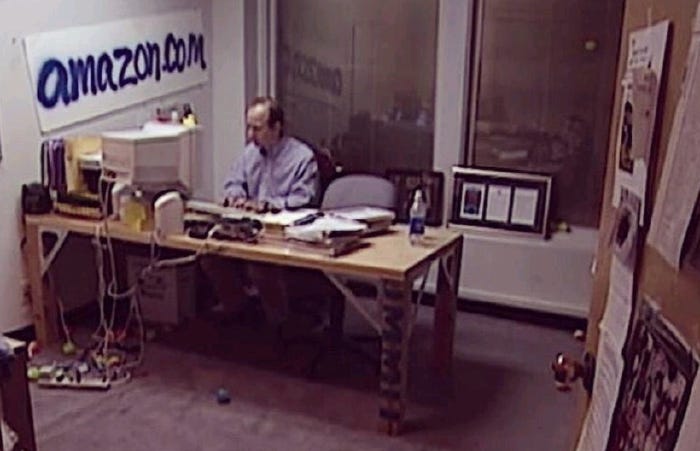
But under all of that, something is clearly working.
Early operators often describe the same feeling:
“It didn’t feel safe. It felt inevitable.”
They aren’t looking for guarantees.
They’re looking for motion—enough proof of momentum that staying where they are feels like the real risk.
Your job isn’t to present a perfect company.
It’s to present a company where their arrival changes the slope.
🧲 Build Pull, Not Push
Most founders rely on push-based hiring—outbound messages, job posts, recruiter hustle. It works, but it rarely attracts the people you actually want.
The best founders build pull.
Pull looks like:
People asking if you’re hiring without being prompted
Operators you respect requesting time just to understand what you’re building
Colleagues forwarding your posts to people they rate
Interviews that feel like co-design instead of interrogation
Pull happens when four things are true:
Your mission is clear
Your product story is interesting
Your momentum is visible
Your conviction is obvious
At that point, you’re not trying to persuade candidates.
You’re giving them a rational excuse to follow their instincts.
🌱 The Real Currency: Agency
For your first ten hires, the real currency isn’t money—it’s agency.
Agency is the combination of ownership, responsibility and support. It tells a candidate:
What outcome they will own
How success will be measured
Where they have decision-making authority
What they can expect from you
Exceptional operators optimise for impact and learning far more than comfort. When you offer real agency, true control over the work, not performative autonomy, you become competitive with companies that can outspend you easily.
Agency is how you pay 10x talent before you can afford 10x salaries.
✏️ The Narrative Offer
In the early days, an offer is more story than spreadsheet. Compensation matters, but it only lands when the narrative is compelling.
The strongest founders frame the conversation like this:
Here is where the company is today
Here is where we could be in 12–24 months
Here is the constraint slowing us down
Here is the role that removes the constraint
Here is what changes if you do this well
Only then do they discuss salary and equity.
A narrative offer answers three questions:
What will I build?
How will I grow?
What upside do I share if this works?
When those answers are clear and honest, the number becomes context—not the decision.
⚙️ Builders, Not Runners
Your first ten people can’t simply run systems—they need to build them.
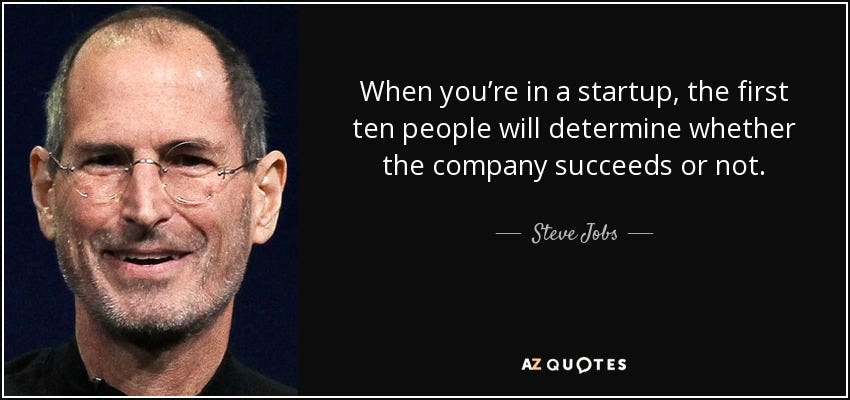
Runners want clarity, structure and predictability.
Builders thrive in environments where the answer doesn’t exist yet.
You can spot builders by the way they talk about their past roles:
Did they follow processes or design them?
Did they wait for tasks or go hunting for problems?
Does ambiguity energise them or drain them?
The first ten either make your job easier every month or harder.
There is no middle ground.
💡 Founder OS: The First Ten System
The early-stage companies that hire well before they outspend anyone tend to follow a similar operating system:
1. Map constraints, not job descriptions
Identify the three friction points holding the company back.
Design roles responsible for removing them.
2. Sell the mission and price the risk
Be honest about what is fragile and precise about what is working.
People follow clarity more than certainty.
3. Give builders room to run
Define success by outcomes, not tasks.
Make decision boundaries explicit so autonomy is real.
4. Close the loop with your early team
Involve your first hires in shaping who comes next.
They don’t just work in the system—they help build it.
📡 The Gravity Test
A simple way to assess whether you’re ready to attract world-class operators is to study how talent behaves around your company.
Do smart people ask for demos?
Do candidates reference your work unprompted?
Do employees introduce you to people they genuinely rate?
Do interviews drift toward co-design rather than Q&A?
If the answer is yes, you’re building gravity.
If not, the issue is rarely compensation. More often it’s your narrative, clarity, momentum, or visibility.
The encouraging part?
All of that is in your control.
🧠 Founder Wisdom: A BrainDump on 10x Talent
Price’s Law says that a small fraction of people produce a disproportionate share of the value. In a team of 100, roughly 10 generate half the output.
In a team of ten, the effect is amplified.
I wrote about this in a BrainDump on Price’s Law, and the same idea applies even more intensely to your first ten hires. This is why early hiring is not a volume exercise. You must build an environment where high-leverage operators thrive. That means maintaining a high bar, being honest about expectations and offering meaningful ownership.
Your early team should include a handful of people whose absence would be felt within a week. Those are your Price-Law hires.
Attracting and keeping them is some of the highest-value work a founder can do.
🌍 The Three Conversations That Close 10x Operators
Exceptional candidates tend to hesitate for similar reasons. When someone is nearly over the line but not quite, it usually comes down to three conversations:
Trajectory — Where is the company actually going, and what evidence supports that?
Ownership — What exactly will I own, and how much freedom will I have?
Identity — Who will I become if I spend the next three to five years here?
When all three are compelling, the offer stops being a career decision and becomes a life-shaping one.
🪜 The Talent Compounding Effect
There’s a quiet rule inside every great startup:
Talent compounds faster than revenue.
The right engineer amplifies the right product leader.
The right product leader unlocks the right sales hire.
The right operator gives the founder space to think clearly.
Each great hire increases the chances of the next one.
Each mis-hire slows everything down.
This is why your first ten matter so much.
You’re not hiring for today—you’re choosing the slope of the next five years.
🚀 Closing Thought: Hire for Leverage, Not Labour
Your first ten hires won’t just execute work. They’ll define what work matters, what speed looks like and what kind of company you’re building.
You don’t need to outpay anyone to win them.
You need to out-clarify.
Be clear about the journey.
Be clear about the problems.
Be clear about the upside.
Be clear about the autonomy.
Because 10x operators don’t join companies for safety.
They join for the chance to do the best work of their lives.
So when you catch yourself thinking, “We can’t afford them,” ask instead:
“Have I shown them why their best work will happen here?”
That’s your real hiring edge.
And it’s entirely within your control.
Want the full BrainDumps collection?
I’ve compiled all 70+ LinkedIn BrainDumps into The Big Book of BrainDumps. It’s the complete playbook for founders who want repeatable, actionable growth frameworks. Check it out here.


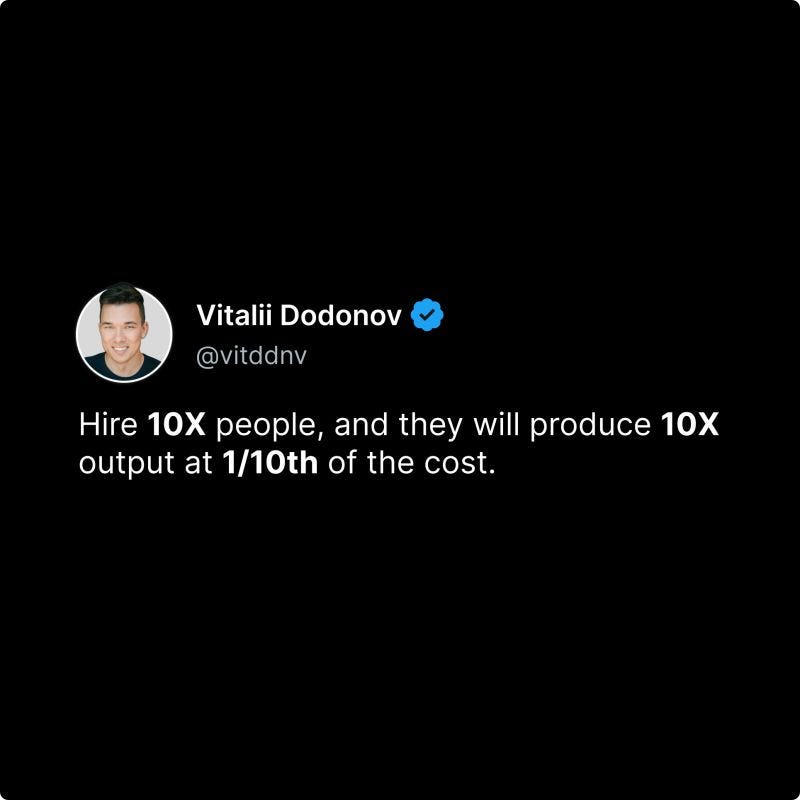
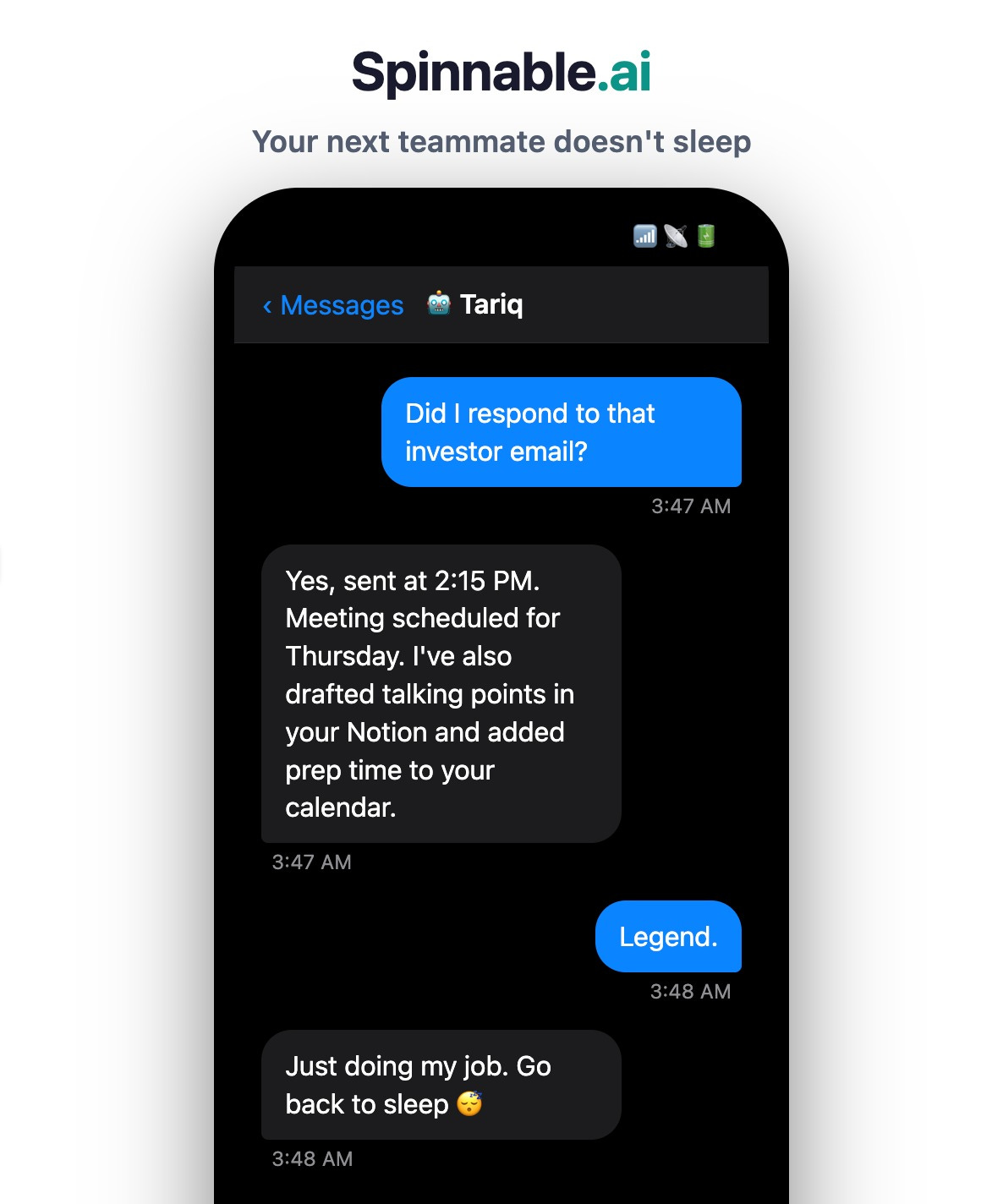
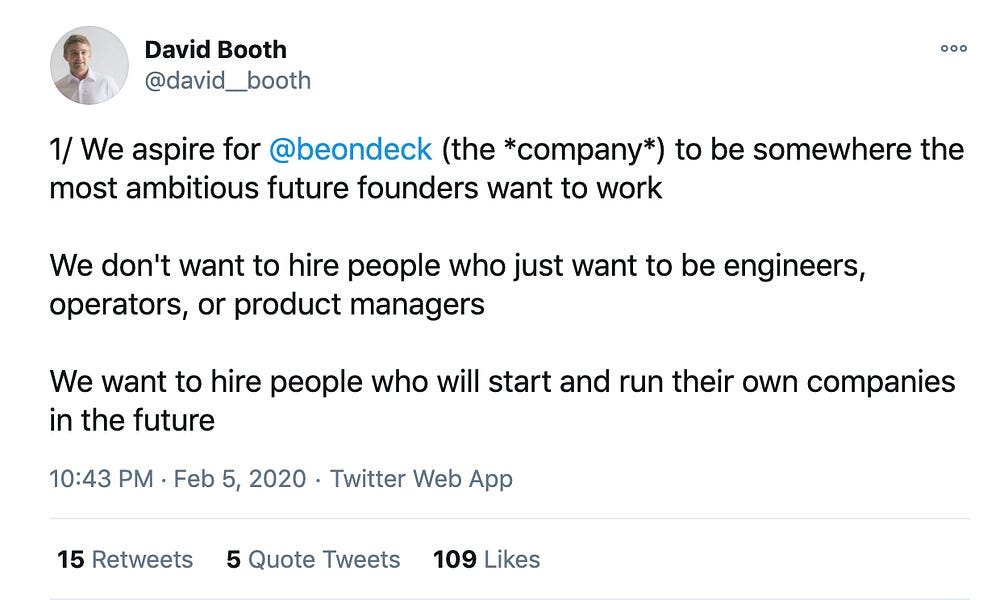


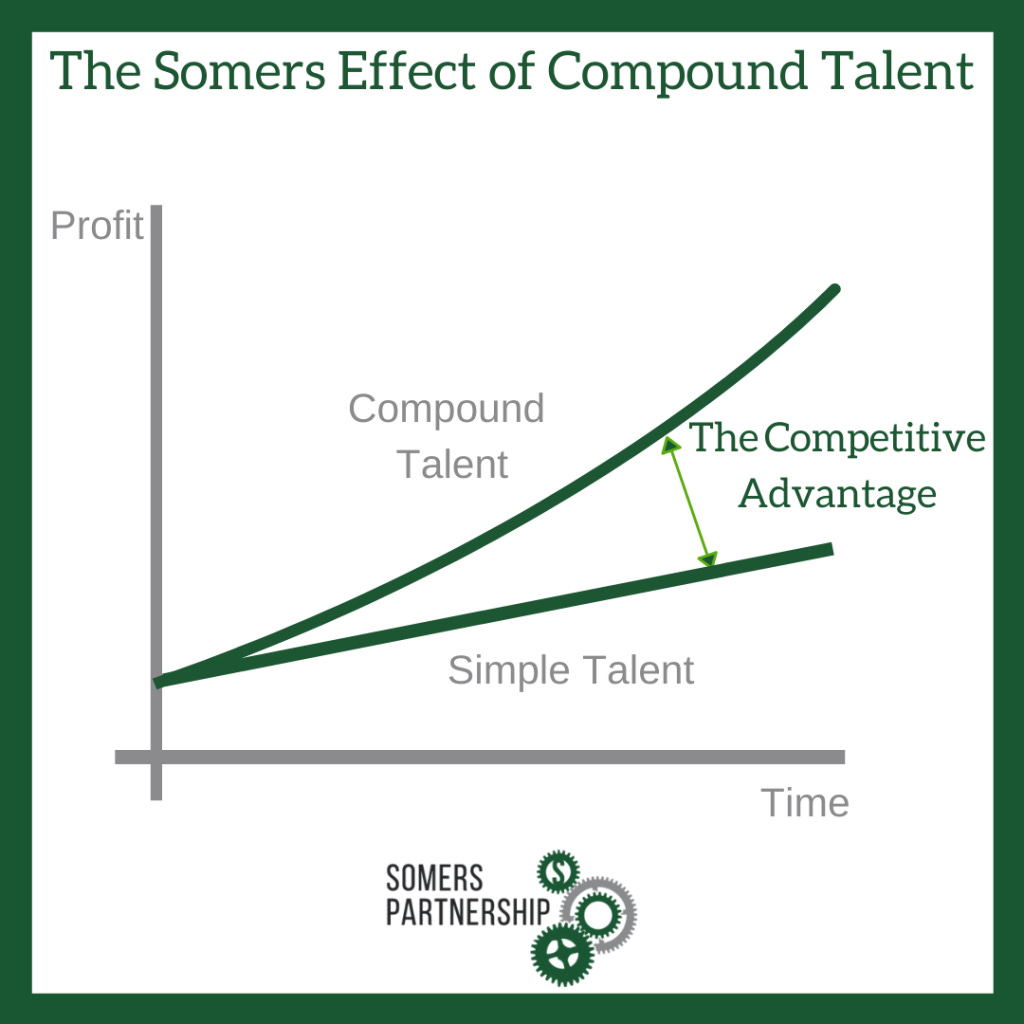
Sorry Chris, not that this is terrible advice, stand alone it has some merit, but…. I’ve been hiring for VC backed, A-C round cleantech start-ups and scaleups for over a decade. One of the big problems founders have is they make the assumption that they can just say-
Come here and build something that wouldn’t exist without you. Come here and your work will move the number every week. Come here and grow faster than anywhere else.
But EVERY founder says this, and most believe it, and that becomes a problem. 10x talent does exist, in unicorn numbers, and guess how many start up founders tell them the above, and how many are desperate to hire them!?
Nothing is easy in scaling, not fundraising, and not in hiring great talent.
How many VC’s hear-
Invest here and build something that wouldn’t exist without you. Invest here and your money will move the number every week. Invest here and grow faster than anywhere else.
If only investing, fundraising, or hiring were that simple!!